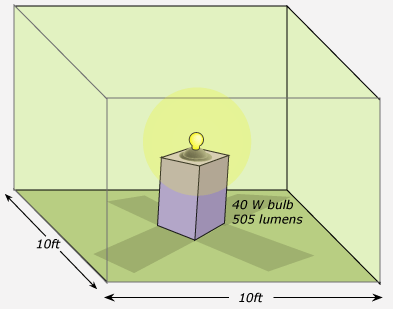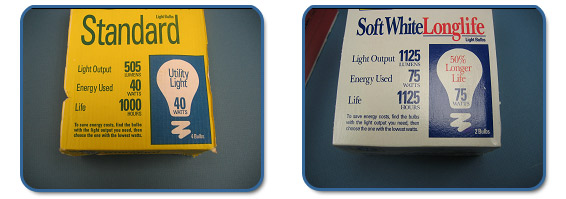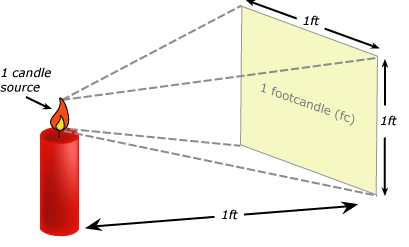When most people buy a light bulb, they look for watts (W). Recall that watt is a unit of power, (i.e., the rate at which energy is consumed from the electricity supplier). It does not say anything about the light.
The most common measure of light output (or luminous flux) is the lumen. All lamps are rated in lumens, as shown in the figure below, and every bulb has 3 parameters listed on the package:
- Lamp lumen output or light output
- Power consumption in watts
- Life of the bulb in hours
Watch this video (1:44) below to find out more about lumens.
Today you’ll see more light bulb options in stores. These bulbs will give you the light you want while saving you energy—and money.
Here’s something to consider. In the past, we bought light bulbs based on how much energy—or how many watts—they use. But today’s energy-saving light bulbs use up to eighty percent less power to give you the same amount of light. So wouldn’t it make more sense to buy light bulbs based on how much light they provide? With lumens, you can do just that.
Lumens are a measure of brightness. So if you know how many lumens you want, you’ll buy just the right bulb for any spot in your home.
Instead of buying an inefficient sixty-watt bulb, look for an efficient replacement that gives you about eight hundred lumens of light. If you’re replacing a one hundred-watt bulb, look for an energy-saving bulb that gives you about sixteen hundred lumens.
Just think: the more lumens, the brighter the light.
To help you shop for the light you want, you’ll find an easy-to-read label on light bulb packages. So you’ll have a simple way to see the bulb’s brightness, how much the bulb will cost to operate for a year, and other qualities like light color—from warm yellowish to cool bluish.
With more energy-saving choices appearing on store shelves, including compact fluorescents, or CFLs, light emitting diodes, or LEDs, and energy-saving incandescents, you’ll have more options that save you money.
So when shopping for a new bulb, look for lumens—or how bright the bulb is. Remember, lumens is the new way to shop for light.
Footcandles
A footcandle (fc) is the Standard unit of measure for illumination on a surface. It is a lumen of light distributed over a 1-square-foot (0.09-square-meter) area.
The average footcandle level on a square surface is equal to the amount of lumens striking the surface, divided by the area of the surface.
Example
A 40 watt bulb produces about 505 lumens and has a life of about 1,000 hours. When this bulb is used to light a room of 10 x 10 feet, these 505 lumens are distributed over 100 square feet of floor area. What is the illumination?



